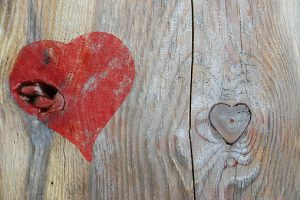 When we think about heart health, we usually only focus on the heart itself. Many of us don’t think or act upon preventing disease and illness to our arteries and veins. But these are important factors to overall heart health. Our arteries and veins can become quite sick just like our heart, which can contribute to serious health consequences.
When we think about heart health, we usually only focus on the heart itself. Many of us don’t think or act upon preventing disease and illness to our arteries and veins. But these are important factors to overall heart health. Our arteries and veins can become quite sick just like our heart, which can contribute to serious health consequences.
If you aren’t clear on what our arteries and veins do, put simply, they are responsible for transporting blood around the body and back to the heart. They help make up the circulatory system and are an integral part to good health.
Advertisement
When arteries and veins become diseased or blocked, the ability for blood to pass through them becomes limited, which can have detrimental effects on the heart.
It’s important that you are aware of the possible health problems that can affect your arteries and veins so that you can work toward preventing them, which in turn keeps your heart healthier for longer.
Common artery and vein diseases you need to know
Coronary artery disease (CAD): When fatty plaque builds up along the artery walls, the arteries become narrow, which makes it increasingly difficult for blood to pass through them. When this plaque breaks off, it can lodge in the artery, causing a blockage that completely blocks blood flow, contributing to a heart attack.
Peripheral artery disease (PAD): Peripheral arteries ensure blood reaches your hands and feet. Similar to CAD, plaque builds up along these arterial walls, which prevents blood flow. When the legs and arms don’t receive enough oxygenated blood, it can contribute to lack of nutrients which can make walking or moving one’s arms painful. PAD can also increase the risk of heart attack or stroke.
Carotid artery disease: Carotid arteries run alongside the neck to supply blood to the brain and head. Plaque buildup along these arteries makes it difficult for blood to pass through and similar to CAD, if plaque breaks off, it can lead to a blockage.
Varicose veins: These bluish veins appear on the legs. Veins are responsible for the transportation of “old” blood back to the heart so it can be re-oxygenated. In people with varicose veins, the veins can become damaged, preventing blood from making it back to the heart. As blood pools in the legs, legs become swollen, heavy, and painful. Furthermore, the veins can appear quite unsightly. There are simple treatments for varicose veins, but you need to speak to your doctor.
Spider veins: Spider veins and varicose veins are often confused with one another. The main difference is that spider veins are thinner than varicose veins and can appear in a web-like pattern.
Advertisement
Aneurysm: When an artery wall weakens and bulges like a balloon, this is an aneurysm. An aneurysm can occur in any blood vessel and can be fatal if it bursts.
In order to prevent these diseases from happening to you, continue to adhere to a heart-healthy lifestyle of eating well, regular exercise, maintaining a healthy weight, not smoking, avoiding prolonged sitting or standing, reducing stress, monitoring cholesterol and blood pressure, and getting adequate sleep.
Related: Natural vasodilators: How to dilate blood vessels naturally and increase blood flow
